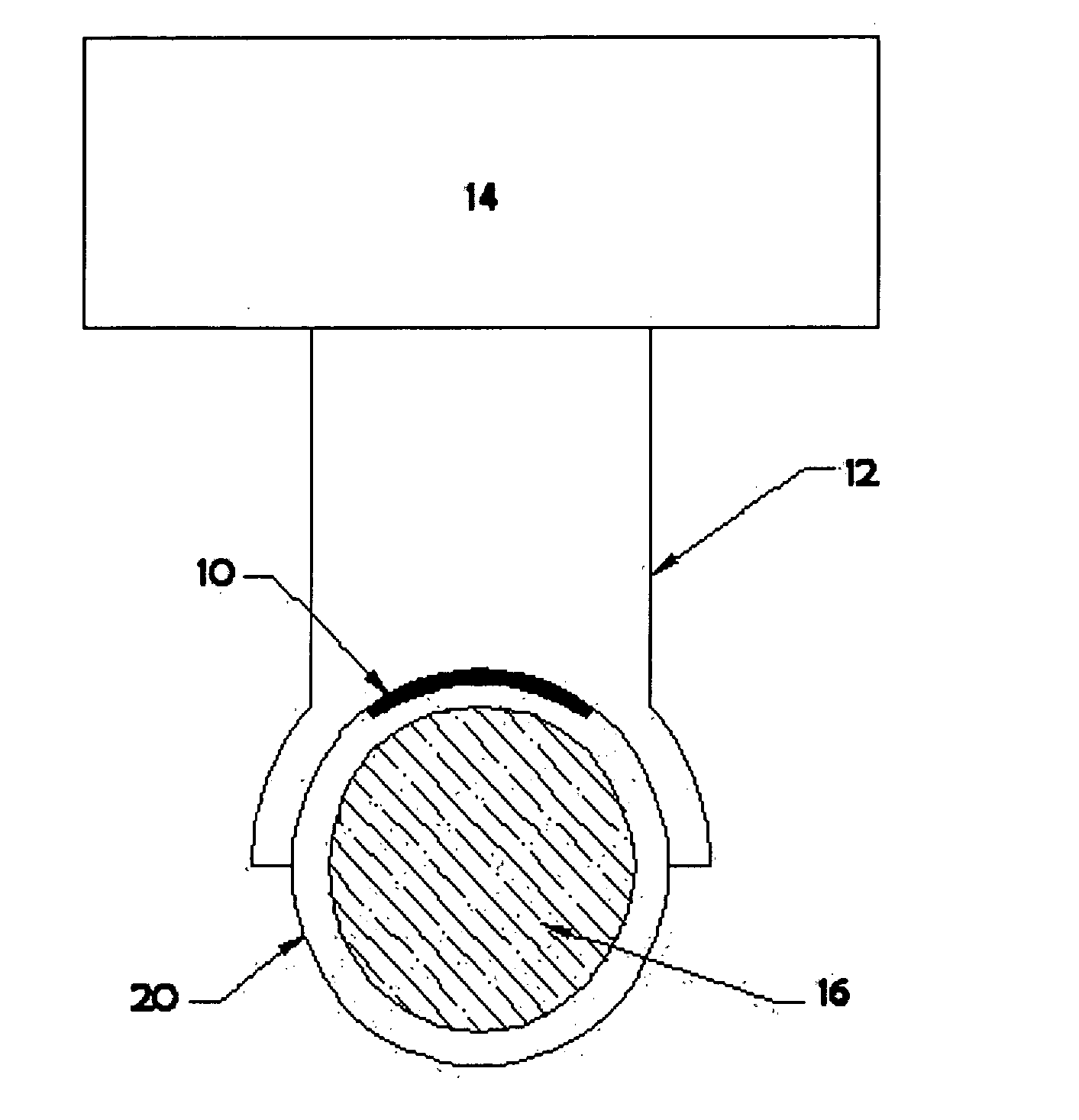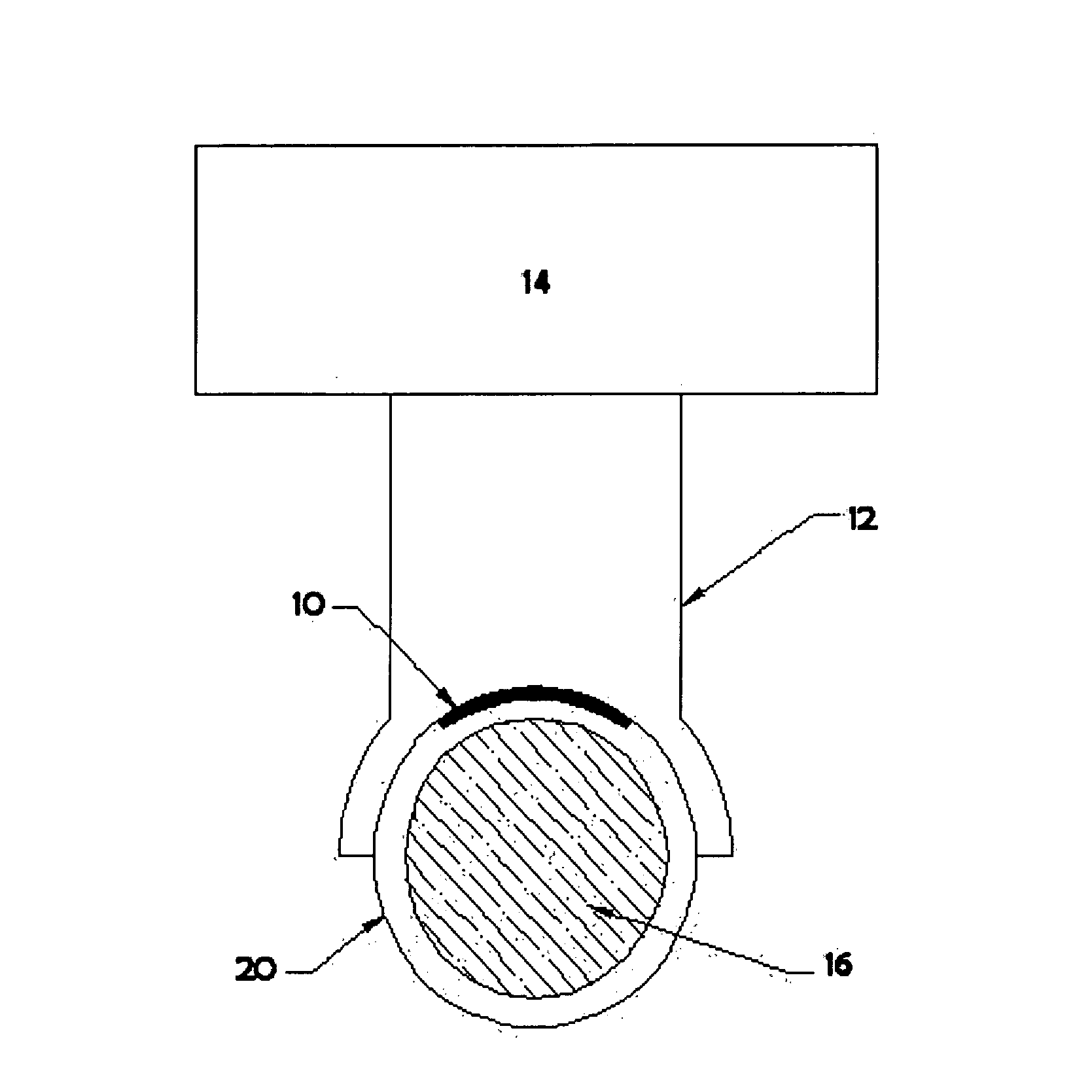Method for embedding a marking substance in a device such as an insertion tube
a permanent marking and insertion tube technology, applied in the field of permanent marking devices, can solve the problems of bleaching of photosensitive materials, and achieve the effect of high contrast, resistance to abrasion and chemical degradation
- Summary
- Abstract
- Description
- Claims
- Application Information
AI Technical Summary
Benefits of technology
Problems solved by technology
Method used
Image
Examples
Embodiment Construction
[0010] The preferred embodiment of the present invention is accomplished in a process in which a marking substance (such as titanium dioxide or other pigment materials, urethane, PTFE, paint, epoxy, and the like) is ultrasonically embedded into an insertion tube, preferably but not exclusively the (typically polyurethane) insertion tube of a medical device. See the attached figure. Markings 10 to be embedded in tube 20 are painted or silk screened onto the exterior of tube 20, and either allowed to cure, or alternatively, cured after the ultrasonic embedding process. An ultrasonic “horn”12 of suitable shape to make intimate contact with at least the area of the tube that carries the marking is then placed over marking 10, while a suitably-shaped “anvil”16 is placed within tube 20. Pressure is applied to the tube and marking by means of the anvil and horn being pressed together, with the marking therebetween. The vibration and heat produced by the ultrasonic wave produced by transduc...
PUM
| Property | Measurement | Unit |
|---|---|---|
| energy | aaaaa | aaaaa |
| insertion depth | aaaaa | aaaaa |
| color | aaaaa | aaaaa |
Abstract
Description
Claims
Application Information
 Login to View More
Login to View More - R&D
- Intellectual Property
- Life Sciences
- Materials
- Tech Scout
- Unparalleled Data Quality
- Higher Quality Content
- 60% Fewer Hallucinations
Browse by: Latest US Patents, China's latest patents, Technical Efficacy Thesaurus, Application Domain, Technology Topic, Popular Technical Reports.
© 2025 PatSnap. All rights reserved.Legal|Privacy policy|Modern Slavery Act Transparency Statement|Sitemap|About US| Contact US: help@patsnap.com


